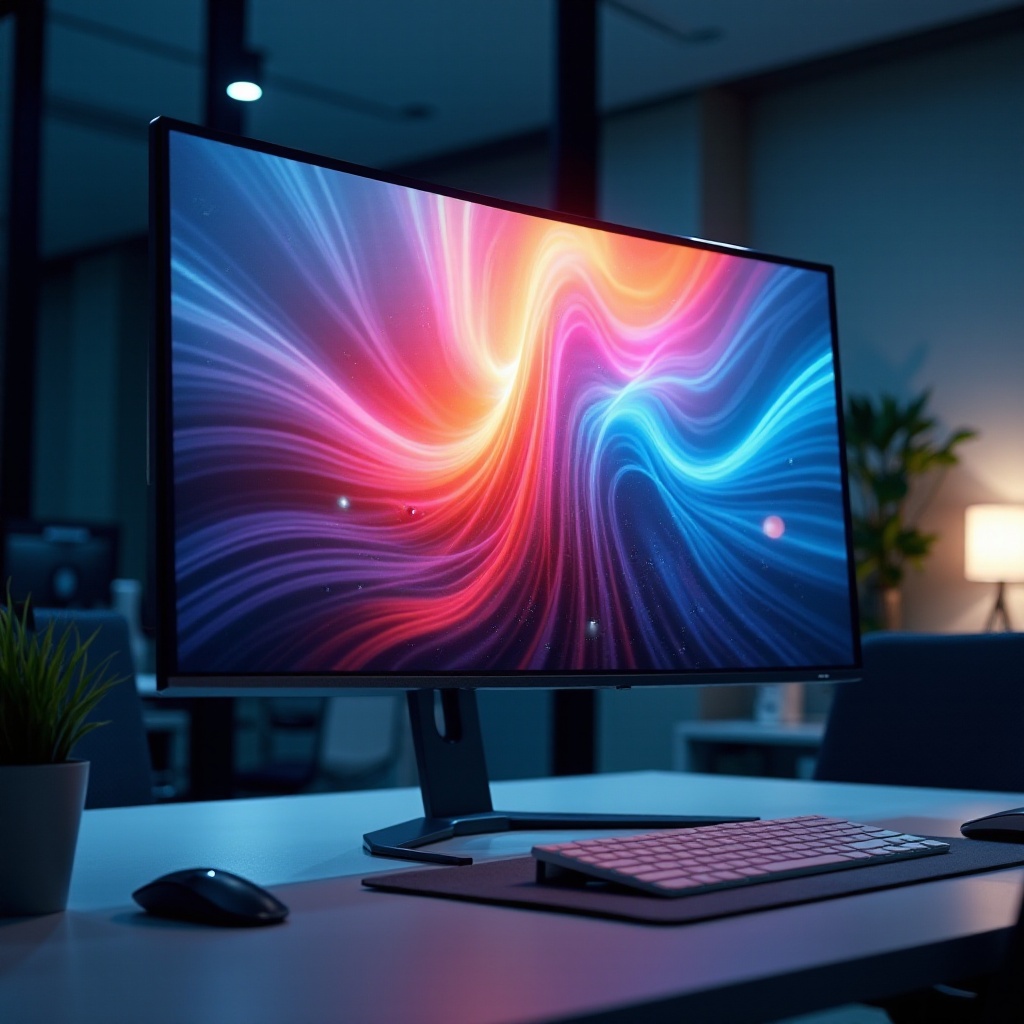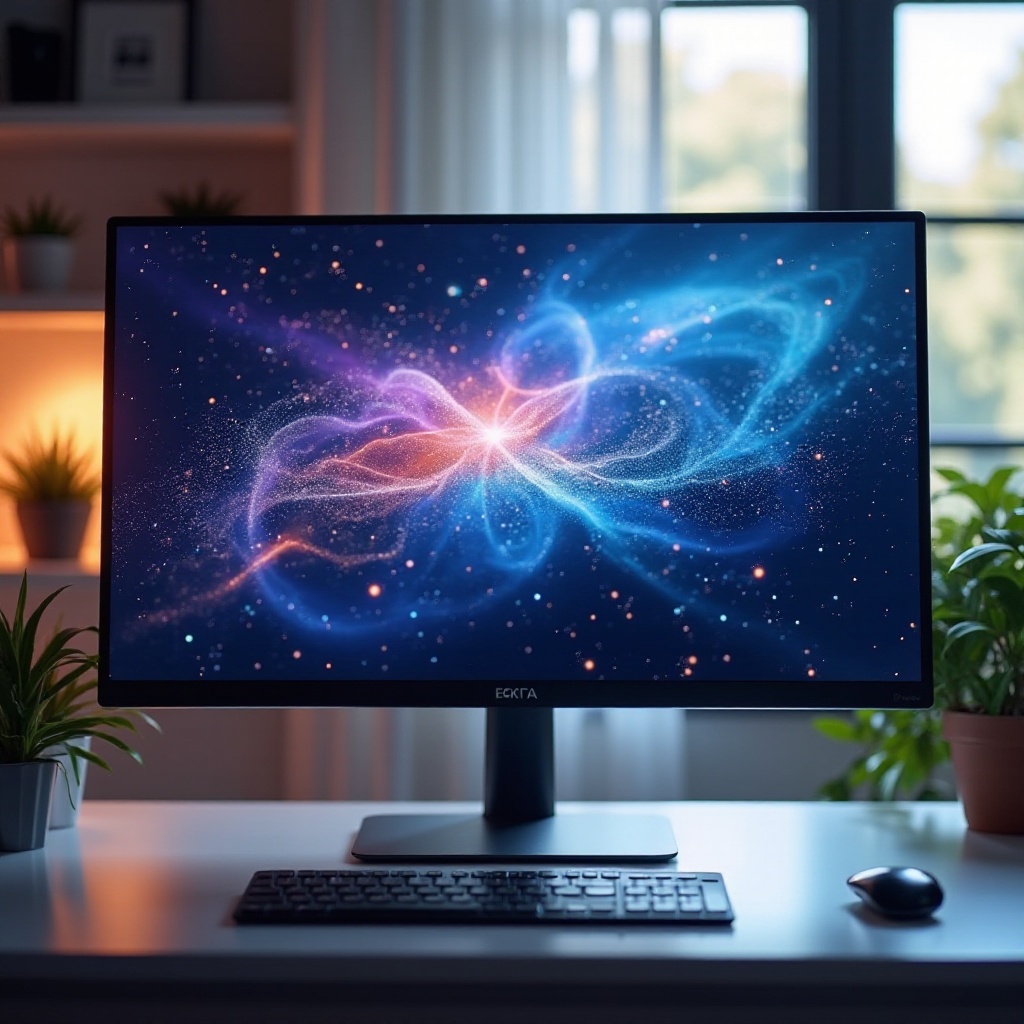Introduction
Visual technology advancements spark continuous curiosity regarding display quality and performance. A common question arises: ‘Does VRB on a VA monitor provide IPS quality?’ Delving into this, we need to understand the fundamental differences between VA and IPS monitors, explore VRB technology, and analyze its potential impact. This examination includes color reproduction, viewing angles, contrast ratios, and whether VRB enhances gameplay and professional applications.

Understanding the Basics of VA and IPS Monitors
Before diving into VRB technology, it’s essential to grasp VA (Vertical Alignment) and IPS (In-Plane Switching) monitors. VA panels are known for their impressive contrast ratios and deep blacks due to vertical liquid crystal alignment. These monitors excel in displaying rich content, especially in dim environments.
In contrast, IPS monitors prioritize color accuracy and consistency. The horizontally aligned crystals offer wider viewing angles and superior color reproduction, making IPS the choice for graphic designers and video editors. Both technologies cater to different needs, but understanding their strengths provides a basis for comparing the significance of VRB on VA monitors.
What is VRB Technology?
Visual Response Boost (VRB) is a technology designed to reduce motion blur in LCD displays. It works by turning off the monitor’s backlight rapidly between frames, effectively introducing a black frame insertion. This reduces perceived motion blur, enhancing the sharpness of moving images.
By decreasing the time each frame remains on the screen, VRB aims to provide a clearer viewing experience, essential for fast-paced content like gaming and action movies. Understanding how VRB works in tandem with VA technology can shed light on whether it can truly match IPS quality.

Comparing VA and IPS Monitor Technologies
Color Reproduction
IPS panels are lauded for their superior color accuracy and consistency, crucial for color-sensitive work such as photo and video editing. These panels cover a broader spectrum of colors with high fidelity.
In contrast, VA panels hold their own with vibrant color displays, though they may not match IPS in terms of precision. VRB’s impact on color accuracy in VA monitors could be a significant factor in determining if they can rival IPS.
Viewing Angles
IPS monitors shine with their wide viewing angles, maintaining color integrity from various perspectives. This makes them ideal for group settings and professional environments where screen sharing is common.
While VA panels are improving, they typically suffer from color and contrast shifts when viewed off-angle. Examining VRB’s effect here is vital to understanding if it bridges this gap to match IPS quality.
Contrast Ratio
VA panels excel in contrast ratios, offering deep blacks and exceptional detail in dark scenes, making them suitable for media consumption and gaming in low light. IPS panels, while providing decent contrast ratios, cannot match the depth offered by VA technology.
Investigating how VRB influences these characteristics will help ascertain if VA monitors can achieve the dynamic range of IPS displays.
Impact of VRB on VA Monitors
Understanding VRB’s enhancements in motion handling and refresh rates can guide us in evaluating its overall impact on VA monitors. Enhancements in these key areas can potentially elevate the performance of VA monitors to rival that of IPS monitors, especially in fast-paced scenarios.
Enhancements in Motion Handling
VRB aims to reduce motion blur by inserting black frames, significantly enhancing the clarity of fast-moving objects. This is particularly beneficial for VA monitors, traditionally known for slower response times compared to IPS. Enhanced motion handling could make VA monitors a viable option for fast-paced gaming and action-packed video viewing.
Improvements in Refresh Rates
While VA panels typically offer refresh rates between 60Hz and 240Hz, implementing VRB can aid in reducing ghosting and image tearing. By sharpening the transitions between frames, VRB contributes to smoother visuals. This improvement is crucial for gamers who demand high performance from their displays.
VRB technology could potentially elevate VA monitors, bringing them closer to the experience provided by IPS panels.
Practical Use Cases and Performance Comparisons
To fully understand the implications of VRB on VA monitors versus IPS monitors, let’s consider practical scenarios and performance comparisons.
Gaming Experience
For gamers, VRB on VA monitors could be a game-changer. The enhanced motion clarity reduces lag and ghosting, providing an engaging and immersive gaming experience. When evaluating the impact of VRB, consider its effect on response times and frame rates.
Professional Applications
Professional environments demand color accuracy and wide viewing angles, areas where IPS monitors traditionally excel. VRB’s contribution to motion handling doesn’t significantly impact professional needs unless the work involves fast-moving content. However, VRB’s effect on maintaining color integrity could be key in determining if a VRB-enhanced VA monitor could replace an IPS for professional work.
Both gaming and professional applications offer insights into the potential of VRB on VA monitors matching the IPS quality.

User Reviews and Expert Opinions
User reviews and expert opinions are invaluable in this analysis. Many users report enhanced gaming experiences with reduced motion blur thanks to VRB. However, opinions vary regarding its impact on professional applications, especially in maintaining color accuracy and viewing angles. Professionals might still prefer IPS for its unwavering color precision.
Experts also highlight that while VRB significantly boosts VA monitors’ performance, matching the innate qualities of IPS technology remains challenging. Reviewing these insights provides a balanced view of VRB’s impact.
Conclusion
In addressing whether VRB on a VA monitor provides IPS quality, it’s clear that VRB enhances motion handling and refresh rates, making VA monitors more competitive, especially in gaming scenarios. However, IPS still holds an edge in color accuracy and viewing angles, crucial for professional use.
Frequently Asked Questions
Is VRB on VA monitors good for gaming?
Yes, VRB reduces motion blur and enhances refresh rates, improving gaming performance.
How does VRB technology affect color accuracy?
VRB primarily enhances motion clarity and does not significantly alter color accuracy, though overall performance is improved.
Can a VRB-enhanced VA monitor replace an IPS monitor for professional work?
While VRB improves certain aspects, IPS monitors remain superior for professional work demanding color accuracy and wide viewing angles.
